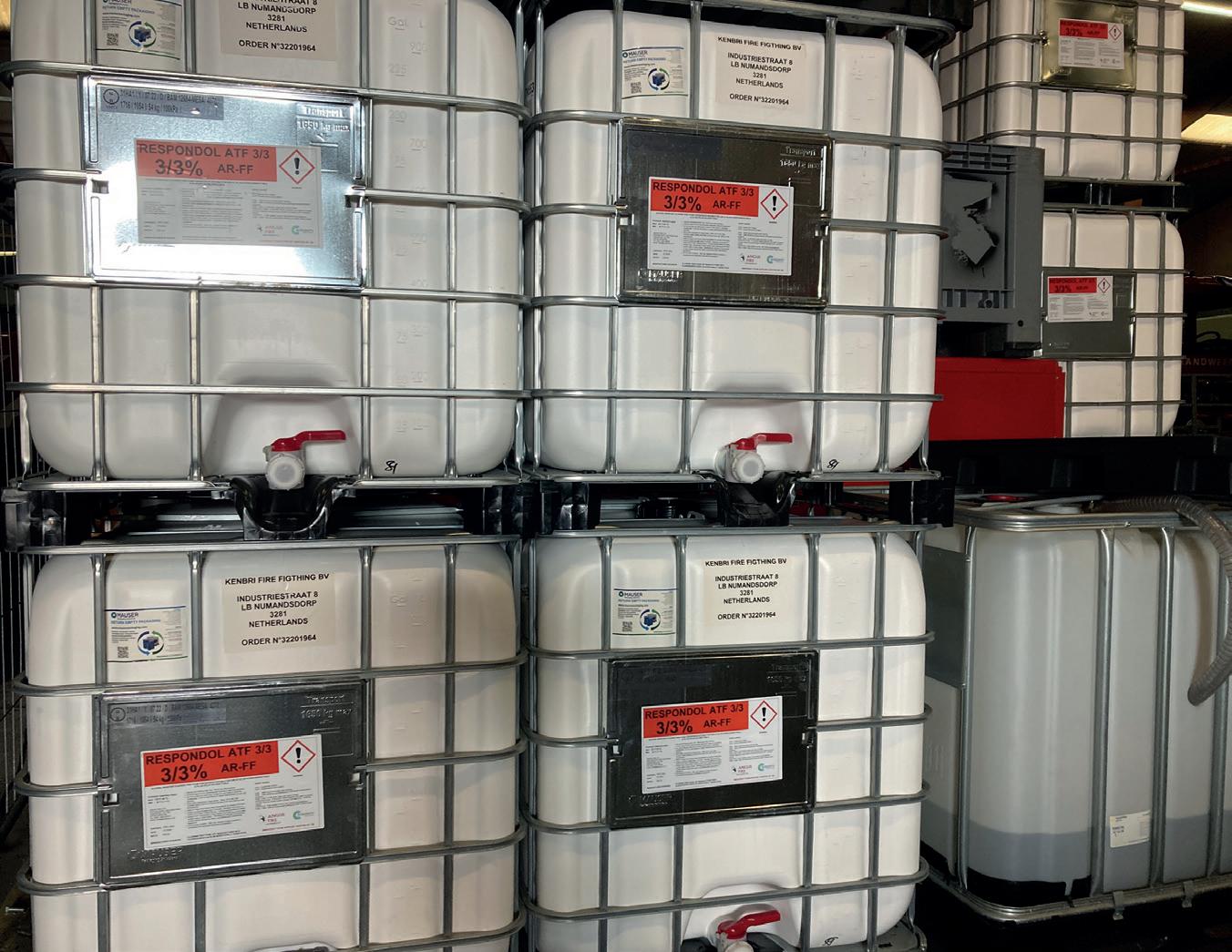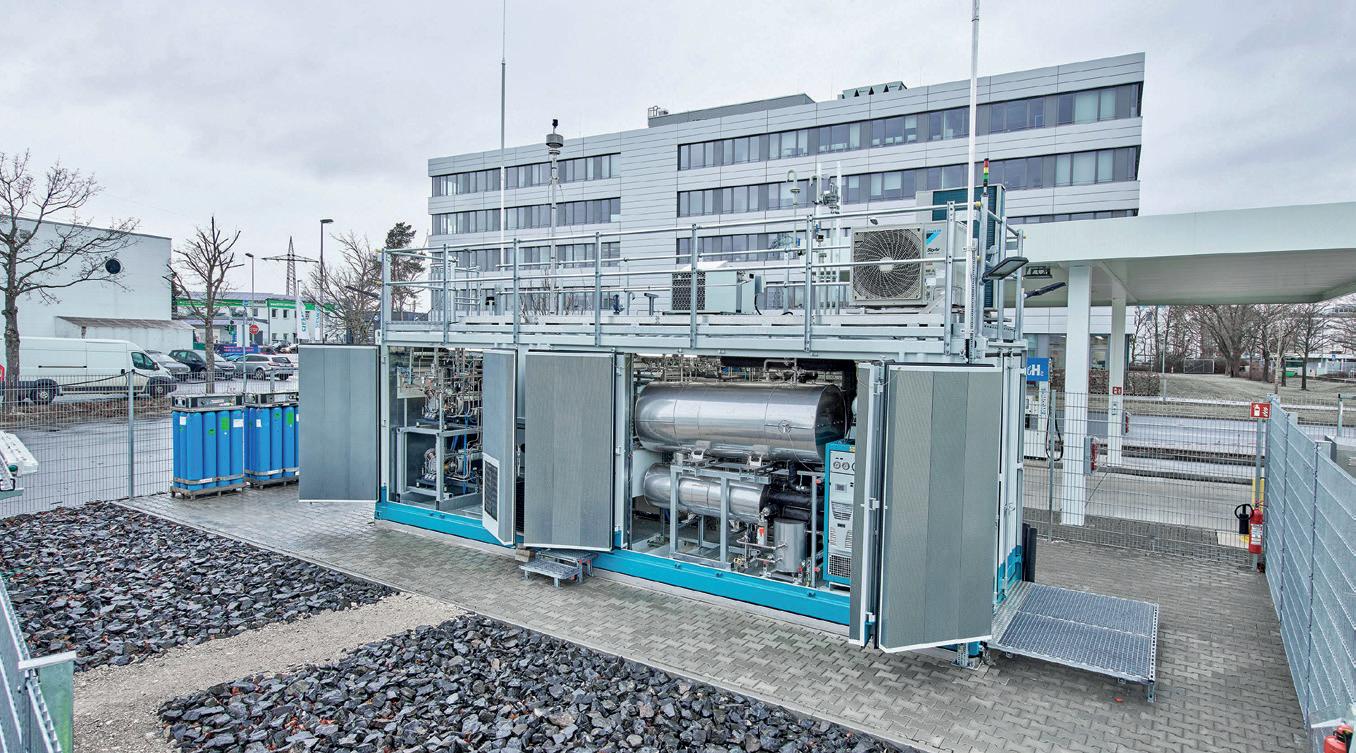
4 minute read
Extinguishing foam transition with a sound plan
FIRE FIGHTING FOAM TRANSITION REQUIRES A SOUND PLAN
The experts at Kenbri Fire Fighting explain how the European Chemicals Agency’s expected PFAS restriction will impact operations
Advertisement
IT IS expected that the production, trade and use of PFAS-containing products will be severely curtailed starting January 2023. The European Chemicals Agency (ECHA) has drafted a PFAS restriction that is expected to take effect starting 1 January 2023 and will have a significant impact. Hans Huizinga, fire fighting foam and safety consultant at Kenbri Fire Fighting, explains: ‘We have been informing companies and safety regions about the massive upcoming changes in the area of fluorinated fire fighting foam for over five years. However, thus far, many organisations have chosen to procrastinate on measures regarding the transition from fluorinated to fluorinefree materials. Now, the legal framework and the time frame for this issue have become clear.’ As part of the restriction, ECHA has stipulated a time frame for the phasing out of PFAS in fire fighting foam. This time frame shows that Seveso companies (those linked to handling, manufacturing, using or storing dangerous substances) have another ten years to transition to fluorine-free alternative extinguishing foam and suitable equipment. PFAS-containing fire fighting foam can still be used during the transition period. However, these transition periods go hand-in-hand with very strict conditions for the use or storage of PFAS-containing foam. All the above needs to be defined in a formally approved foam transition plan.
THE CLOCK IS TICKING
‘The clock is ticking,’ Huizinga says. ‘During the transition phase, users need to draft a location-specific foam transition plan for the replacement of PFAScontaining fire fighting foam. This plan needs to contain a detailed description of the purposes, scenarios and the method in which the foam is applied. It will also need to explain the approach to handling foam residue and pollution and the method of cleaning the firefighting equipment used. This requirement will take effect six months after the regulations are implemented. In other words, companies will be faced with this requirement as early as July 2023.’
JOINING FORCES
‘Fortunately, companies like ours, in close collaboration with Arcadis (specifically, with Wim Plaisier, right, Arcadis’ EMUA PFAS lead), are making preparations to ensure Seveso and BRZO companies can meet these regulations. Our collaboration, PFAS Cleaning & Treatment Solutions, unites companies from various disciplines that are all needed to meet the new laws and regulations,’ Huizinga explains.
CLEANING VEHICLES
This is why, in addition to consultancy and the sale of fluorine-free fire fighting foam, Kenbri recently added another service to its already extensive assortment. This service entails the cleaning of foam extinguishing vehicles at the company location in Numansdorp. These special cleaning facilities have been fully booked until April next year. In order to properly change the fire fighting foam, the foam tank is first
02 01

03
emptied and its contents are safely disposed of. Afterwards, the entire system is rinsed with with a specially developed cleaning agent (such as Fluorofigther). Together with the Fluorofighter cleaning agent, Arcadis and Kenbri have developed a special rinsing procedure to thoroughly rinse various components of PFAS contaminated fire fighting systems. These systems can consist of, but are not limited to, all storage, distribution and mixing equipment. However, cleaning foam tenders is just one of the steps required for the transition process. Companies that fall under the Seveso directives are subject to significantly more far-reaching measures.

ENORMOUS IMPACT
Huizinga has a seat in the Dutch national PFAS extinguishing foam work group, and cannot stress enough how much of an impact this transition will have: ‘The costs are immense. You need to think big to comprehend the full scope of this issue. However, with our roadmap, we can offer our customers clarity and help them safely make the transition to fluorinefree fire fighting foam with respect for humans and the environment. Nowadays, highly effective PFAS-free equivalents for fluorinated foam are available. These products have the same extinguishing capacity as fluorinated materials. Our Respondol ATF is an example of this.’
FLUORINE-FREE FOAM CONCENTRATE
‘Respondol, by Angus Fire, is a highgrade, synthetic, fluorine-free foam concentrate, specifically developed for extinguishing and securing all kinds of flammable substances and class-A fires,’ Huizinga explains. ‘This foam is highly suitable for firefighters confronted with a variety of hazardous situations. The foam is used in high-risk situations where hydrocarbons like oil, gasoline, diesel fuel and kerosene, and/or polar solvents (such as alcohols, ketones, esters and ethers) are stored, processed or transported.’ ‘Respondol covers non-ignited hydrocarbons in a vapour-suppressing blanket of foam. Moreover, this highly stable foam has a long shelf life and can be used to fight forest fires and fires in Class-A materials like wood, paper and car tyres.’ Huizinga concludes: ‘We’re going to have our work cut out for us when it comes to assisting companies with their management plan. At the same time, this means we are on the way to a fluorine-free environment – and a safe work environment – which will benefit everyone.’ That said, Huizinga does understand that there is a certain reluctance to fully transition to fluorine-free materials in the case of serious, large-scale incidents. However, he is already working on a concrete proposal which will even entail cross-border collaborations.
For more information: www.pfasoplossingen.nl
01 Wim Plaisier, EMUA PFS lead, Arcadis 02 Respondol by Angus Fire 03 Hans Huizinga, fire fighting foam and safety consultant, Kenbri










